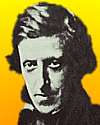
On 2 May 1857, Frederick Scott Archer died, the English inventor who invented the photographic wet collodion process (1850), the first by which multiple prints could be made, and used for the next three decades until replaced by the use of the modern gelatin emulsion.
He is one of those inventors whose name is little-known, died in poverty and yet made a great contribution in his field. When he died, a subscription was collected for his widow, and also Parliament granted her, and their children, a government pension, in appreciation of the value of his invention to the nation.
For a short outline of his life, and the wet collodian process, read this article from A History of Photography (1888).

On 2 May 1947, Sir James Dyson was born. Today's book pick is: Against the Odds: An Autobiography, by James Dyson. This is the inspiring autobiography of James Dyson, Britain’s leading entrepreneur and inventor, founder of Dyson Appliances and inventor of the Dual Cyclone, England’s biggest-selling vacuum cleaner.
It’s a thorough and humorous autobiography combined with many trenchant statements about the shortcomings of modern business. More important, it sets forth Dyson’s successful approach to product design.
What we now celebrate as the “overnight success” and “the genius” of Dyson products is anything but, and this is the book that tells this fascinating story. It took Dyson over a decade to turn the original “eureka” moment for his vacuum cleaner into a product on the market, which includes finding bank loans, years of day to day R&D, years of unsuccessful attempts at licensing deals, oh and half a dozen legal battles in between. Even just reading this story makes you wonder how James Dyson managed to get through it all.
This is a true entrepreneurial story, with all the ups and downs, and dozens of interesting insights. Dyson’s perspective and attack on the state of British manufacturing and funding is in itself a must read for every entrepreneur. Additionally, we get a glimpse at his no-nonsense, “Edisonian” approach at innovation: don’t worry about the experts, get to it, test one thing at a time, iterate, improve, rinse, repeat. It took Dyson 1000+ prototypes to arrive at his first vacuum cleaner.
It is available from Amazon, typically about New from $57.50. Used from $2.67. (As of earlier time of writing - subject to change.)
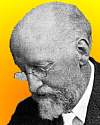 | But, as Bacon has well pointed out, truth is more likely to come out of error, if this is clear and definite, than out of confusion, and my experience teaches me that it is better to hold a well-understood and intelligible opinion, even if it should turn out to be wrong, than to be content with a muddle-headed mixture of conflicting views, sometimes miscalled impartiality, and often no better than no opinion at all. |
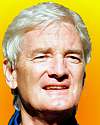 | [In my home workshop,] generally I’m mending things, which is interesting because you learn a lot about why they broke. |
 | It behooves us always to remember that in physics it has taken great men to discover simple things. They are very great names indeed which we couple with the explanation of the path of a stone, the droop of a chain, the tints of a bubble, the shadows of a cup. |
| Before you look at today's web page, see if you can answer some of these questions about the events that happened on this day. Some of the names are very familiar. Others will likely stump you. Tickle your curiosity with these questions, then check your answers on today's web page. | |
| Births | |
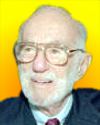 | An American pediatrician, born 2 May 1903, was perhaps the best-known writer of books on child rearing. What is the name of this pediatrician? |
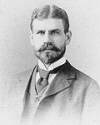 | Jesse William Lazear, born 2 May 1866, was an American physician who as a member of the yellow fever commission proved that the infectious agent of yellow fever is transmitted by Aëdes aegypti. What is the common name of this agent? |
| Deaths | |
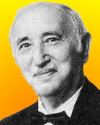 | David Wechsler (1896-1981) was a U.S. psychologist who is also known for his work with abilities of children and adults. What ability did he test? |
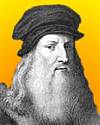 | This Italian who died 2 May 1519 had many talents as painter, sculptor, architect and engineer. He filled notebooks with his scientific ideas. What is the name of this multi-talented person? |
| Events | |
/Nicholson_William(1795-1815)Thm.jpg) | On 2 May 1800, William Nicholson, an English chemist took a battery he had built, and some water, and did something with them never done before. What did he do? |
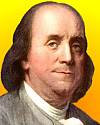 | In 1775, this famous American patriot and scientist finished a study of the Gulf Stream. While deputy postmaster of the British Colonies, beginning in 1769, he noted and set about explaining the fact that ships took 2 weeks longer to bring mail from England than was needed for the return voyage. What is the name of this scientist? |
Fast answers for the previous newsletter for May 1: 16th century (1493-1541) • Scott Carpenter • sulphur • William Hewson • BASIC • Hoover Dam • Empire State Building.
 If you enjoy this newsletter, the website, or wish to offer encouragement or ideas, please send feedback by using your mail reader Reply button.
If you enjoy this newsletter, the website, or wish to offer encouragement or ideas, please send feedback by using your mail reader Reply button. Your click on a Facebook, StumbleUpon, or other social button on the site webpages is also a welcome sign of appreciation. Thank you for using them.
© This newsletter is copyright 2020 by todayinsci.com. Please respect the Webmaster's wishes and do not put copies online of the Newsletter — or any Today in Science History webpage. (If you already have done so, please remove them. Thank you.) Offline use in education is encouraged such as a printout on a bulletin board, or projected for classroom viewing. Online, descriptive links to our pages are welcomed, as these will provide a reader with the most recent revisions, additions and/or corrections of a webpage. For any other copyright questions, please contact the Webmaster by using your mail reader Reply button.
--
If you do not want to receive any more newsletters, Unsubscribe
To update your preferences and to unsubscribe visit this link
Executive Real Estate Business Class
-
"It was like a man with wings. It wasn't like anything you'd see on TV or in a monster movie." ...
About the publisher
Search This Blog
Blog Archive
-
▼
2021
(585)
-
▼
May
(62)
- Tonight: Back-to-Back Premieres
- On This Day for May 31 - Adolf Eichmann hanged, Cl...
- Newsletter for Monday 31 May.
- On This Day for May 30 - Joan of Arc burned at the...
- TONIGHT at 8/7c: The Tulsa Race Massacre Revealed
- Newsletter for Sunday 30 May.
- Bundle Up For The Summer!
- On This Day for May 29 - Mount Everest summit reac...
- Newsletter for Saturday 29 May.
- On This Day for May 28 - Amnesty International fou...
- Newsletter for Friday 28 May.
- On This Day for May 27 - Founding of St. Petersbur...
- Newsletter for Thursday 27 May.
- On This Day for May 26 - Martin Luther declared a ...
- Newsletter for Wednesday 26 May.
- On This Day for May 25 - U.S. Constitutional Conve...
- Newsletter for Tuesday 25 May.
- Behind Every Empire There’s a Titan
- On This Day for May 24 - Opening of the Brooklyn B...
- On This Day for May 23 - Tibet annexed by China, C...
- Newsletter for Sunday 23 May.
- The Tulsa Race Massacre, 100 Years Later
- On This Day for May 22 - Roman Emperor Constantine...
- Newsletter for Saturday 22 May.
- On This Day for May 21 - First nonstop solo transa...
- Newsletter for Friday 21 May.
- On This Day for May 20 - U.S. Homestead Act signed...
- Newsletter for Thursday 20 May.
- On This Day for May 19 - Ringling Bros. Circus for...
- Newsletter for Wednesday 19 May.
- Learning This Fun Doesn't Need A Summer Break
- On This Day for May 18 - Eruption of Mount St. Hel...
- Newsletter for Tuesday 18 May.
- On This Day for May 17 - School segregation outlaw...
- Newsletter for Monday 17 May.
- Follow the trail of 400 facts!
- On This Day for May 16 - Warsaw Ghetto Uprising su...
- Newsletter for Sunday 16 May.
- On This Day for May 15 - Edith Cresson appointed F...
- Newsletter for Saturday 15 May.
- On This Day for May 14 - Declaration of Israel's s...
- Newsletter for Friday 14 May.
- On This Day for May 13 - U.S. declaration of war o...
- Newsletter for Thursday 13 May.
- Ridiculous History You Want To Know About!
- On This Day for May 12 - First flight over the Nor...
- Newsletter for Wednesday 12 May.
- On This Day for May 11 - “New Rome” established by...
- Newsletter for Tuesday 11 May.
- On This Day for May 10 - Nelson Mandela inaugurate...
- Newsletter for Monday 10 May.
- On This Day for May 9 - Fourth and final voyage of...
- On This Day for May 7 - Theatre Royal opened, Pyot...
- On This Day for May 5 - Mexican victory in the Bat...
- On This Day for May 4 - Four students shot at Kent...
- On This Day for May 3 - Margaret Thatcher elected ...
- Newsletter for Monday 3 May.
- TONIGHT: The Bin Laden Raid, Revealed
- On This Day for May 2 - Lou Gehrig's 2,130-game st...
- Newsletter for Sunday 2 May.
- On This Day for May 1 - May Day founded, Arthur We...
- Newsletter for Saturday 1 May.
-
▼
May
(62)
-
Blogroll
-
About
HistoryFact










0 comments:
Post a Comment